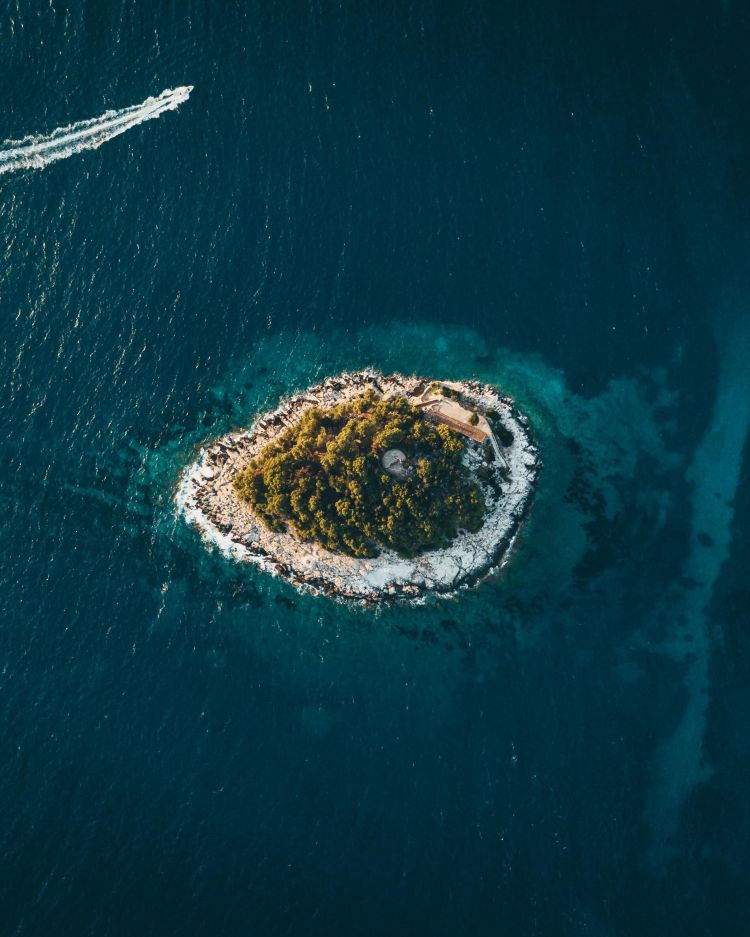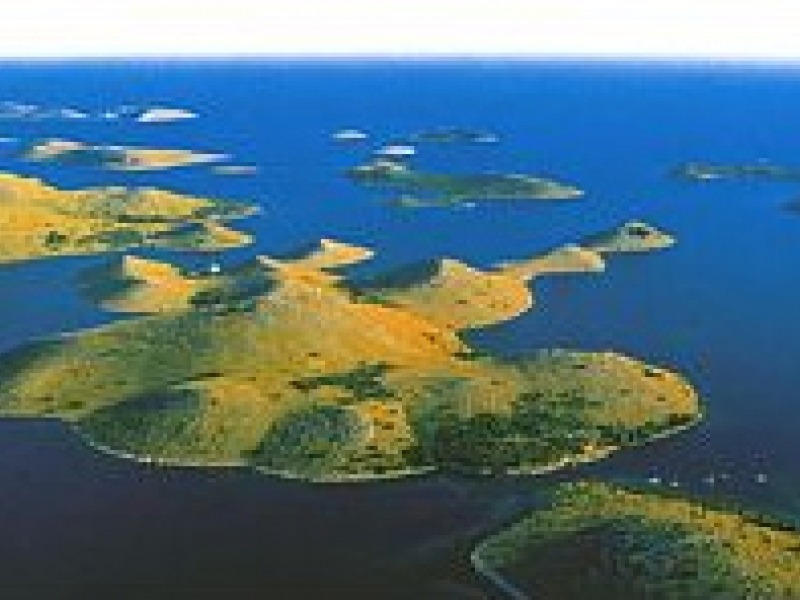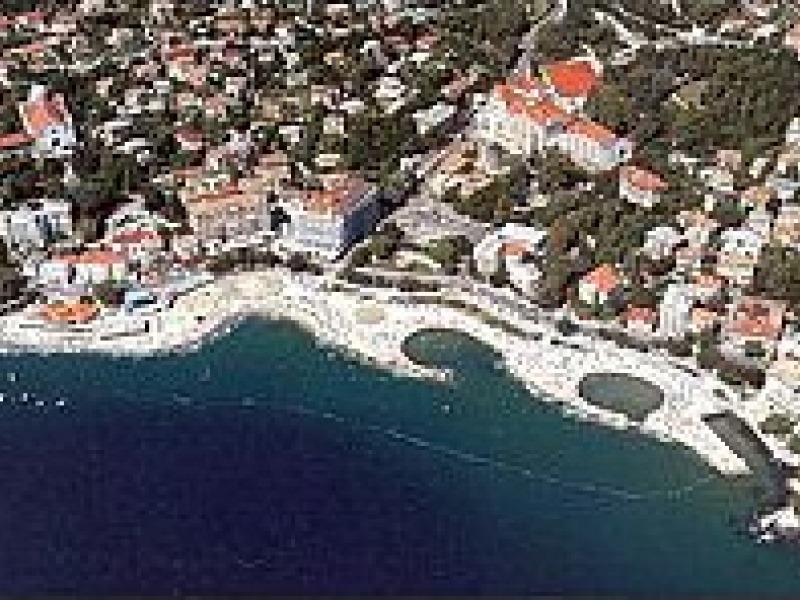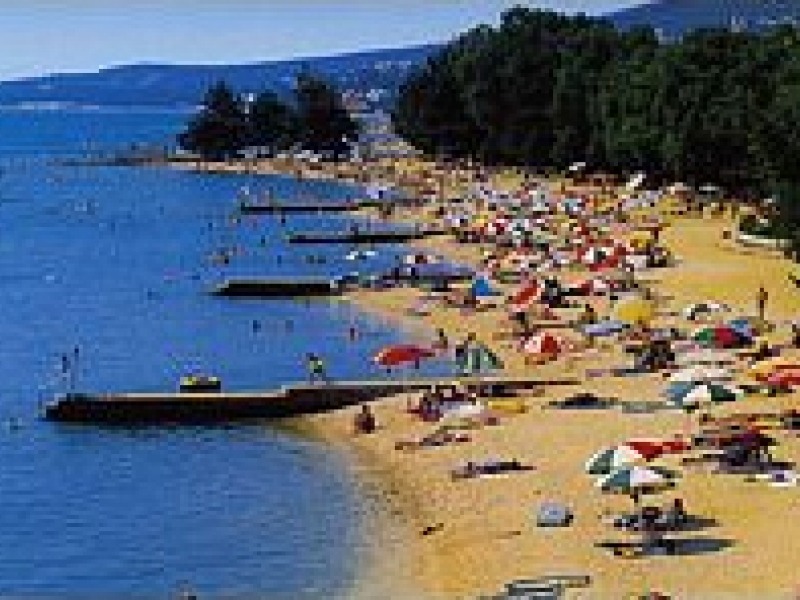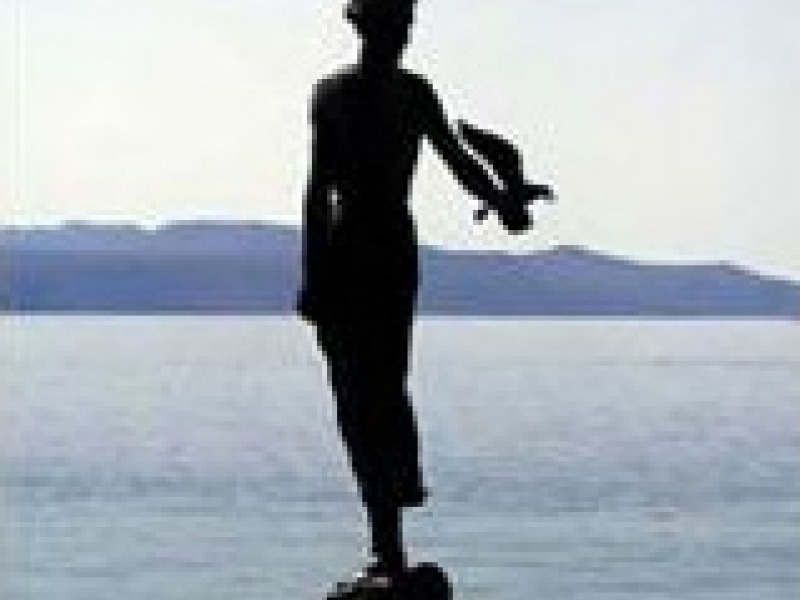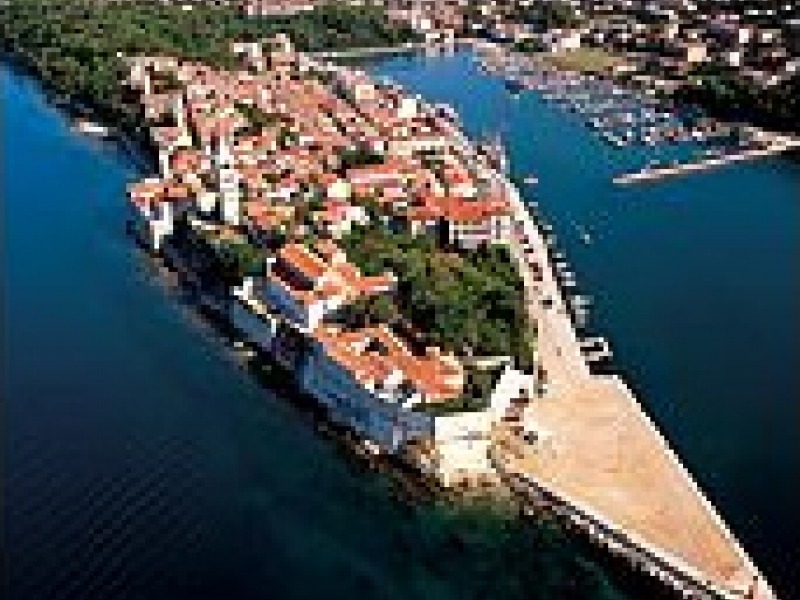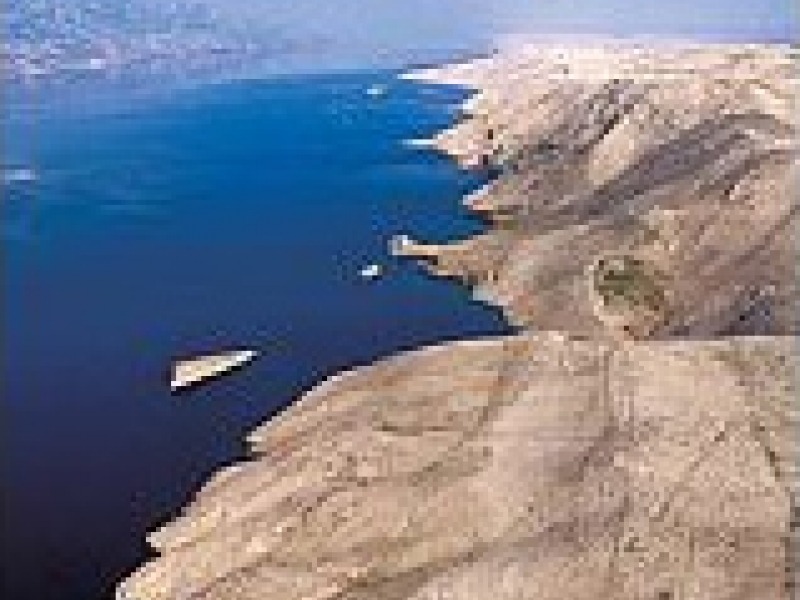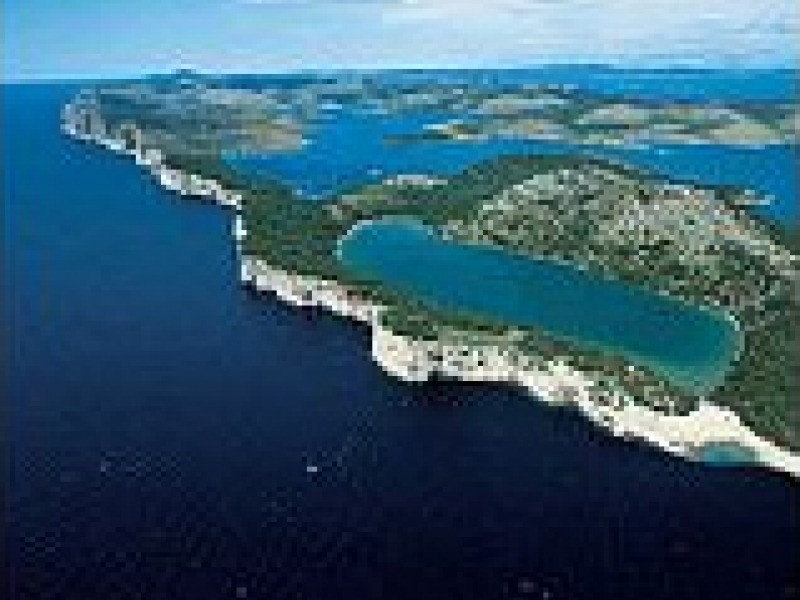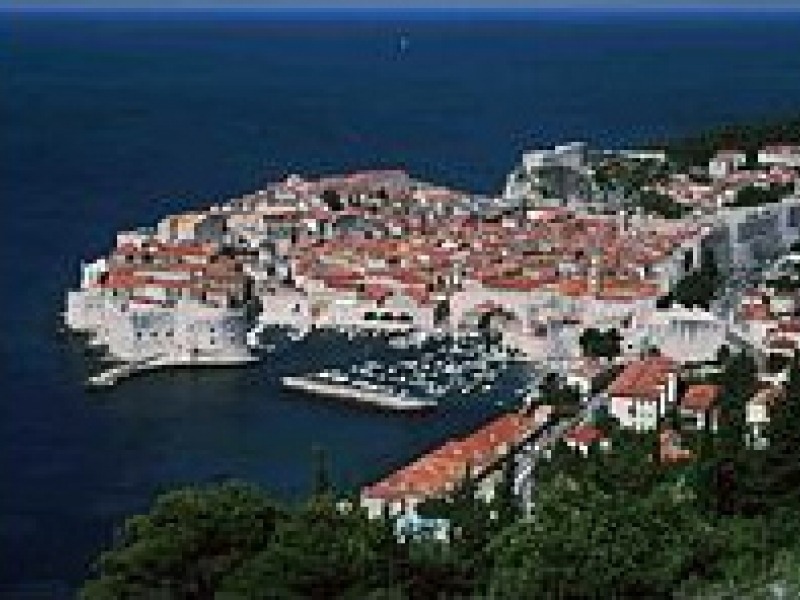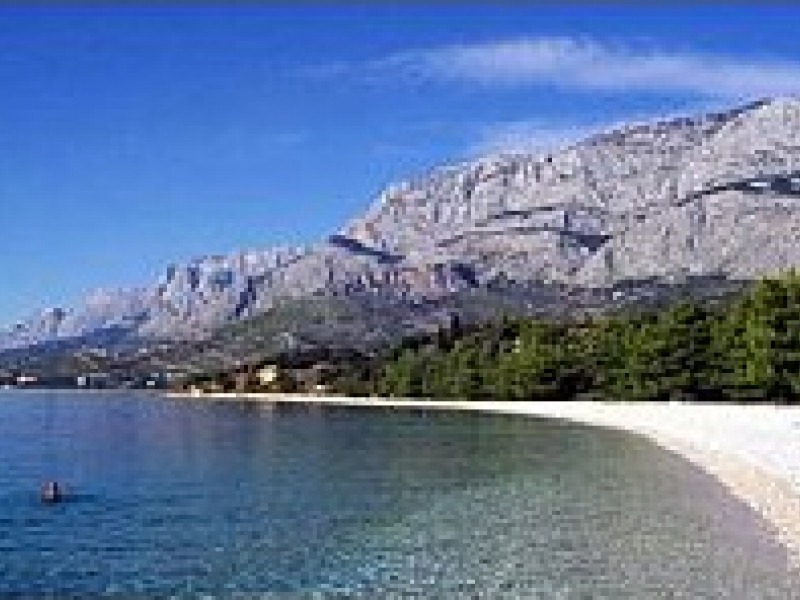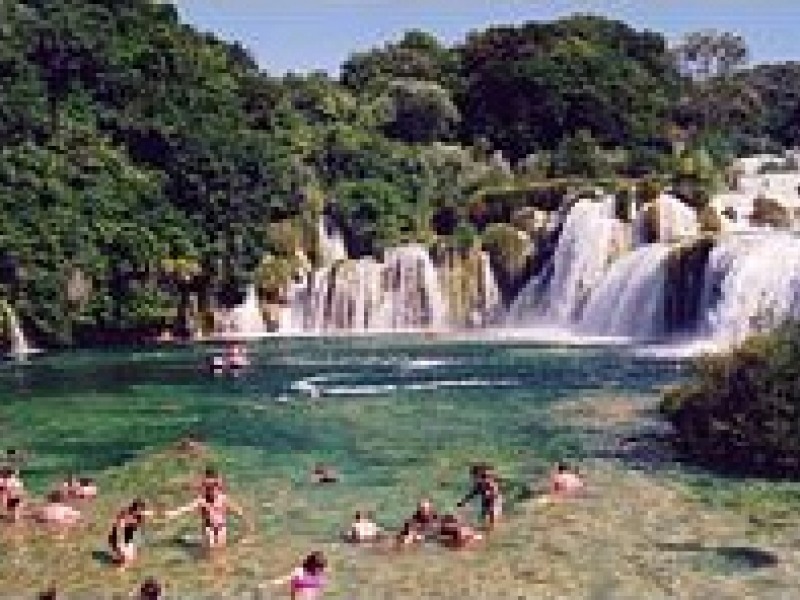Hrvatski otoci
Croatia is a land of islands, it has more than a thousand of them and each one is different. Many of them are inhabited but each and every one is exceptional, with its own story and destiny. To have a weak spot is human and the connoisseurs of Croatian islands have thousands of them. To be more precise 1185 of them. That's how many islands, islets and cliffs are located in front of 1777 kilometers of the Adriatic coast. The first trip to the Adriatic coast and its islands is a journey into the unknown. Every other trip will be a journey to the already familiar beauty of this country, always different but equally breathtaking.
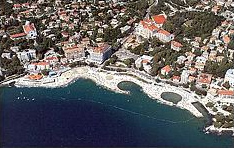 We will begin the story about the islands with the Brijuni islands. These fourteen islands are situated along seven kilometers between Pula and Rovinj. With a little help, nature has created a small paradise here, true harmony of flora and fauna, historical monuments and modern hotels. Brijuni offer shade in the rich evergreen vegetation, pheasants, deer and doe that roam freely all over the island and the peace and quiet of the holm oak and hundred- year old olive groves.
We will begin the story about the islands with the Brijuni islands. These fourteen islands are situated along seven kilometers between Pula and Rovinj. With a little help, nature has created a small paradise here, true harmony of flora and fauna, historical monuments and modern hotels. Brijuni offer shade in the rich evergreen vegetation, pheasants, deer and doe that roam freely all over the island and the peace and quiet of the holm oak and hundred- year old olive groves.
The golden or green Krk is and isn't an island. It is one, if we look at the idyllic nature and peaceful oasis far away from the everyday world but as far as traffic connections are concerned, it isn't. Krk, which also has a small airport, is divided from the mainland by the sea but is connected to it by a bridge.
If you are looking for your own special island, you'll find it on Krk because the islands Plavnik, Kormat, Galun, Prvic and Zec are special tourist destinations offering nature untouched by Man. If you are interested in exciting town bustle and great hospitality, then the island towns Baska, Malinska, Omisalj, Njivice, Krk and Punat, which has the largest marina on the Croatian Adriatic, are the places you need to visit.
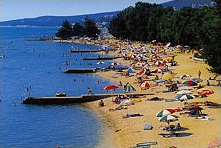 Cres and Losinj. One island or two? They were once connected by a channel, which was dug up by the Romans, but are now apart. The northern part of Cres is hidden away in the Rijeka bay and is exposed to strong gusts of gale, so that sometimes its peaks are white from the foam of the sea. The southern part is protected from the gale so its climate is extremely Mediterranean. In the town of Cres , is the center of the island. You can enter its nucleus through three doors and history rears its head at every corner. There are many monuments that testify to this. What testifies about the people, their statuses and professions are the family crests on the house portals or the engraved tools: the blacksmith's or carpenter's on the houses of craftsmen and a fish on the houses of fishermen.The climate of Losinj is pleasant, what's more it has lots of woods, so it is both a holiday and health resort.
Cres and Losinj. One island or two? They were once connected by a channel, which was dug up by the Romans, but are now apart. The northern part of Cres is hidden away in the Rijeka bay and is exposed to strong gusts of gale, so that sometimes its peaks are white from the foam of the sea. The southern part is protected from the gale so its climate is extremely Mediterranean. In the town of Cres , is the center of the island. You can enter its nucleus through three doors and history rears its head at every corner. There are many monuments that testify to this. What testifies about the people, their statuses and professions are the family crests on the house portals or the engraved tools: the blacksmith's or carpenter's on the houses of craftsmen and a fish on the houses of fishermen.The climate of Losinj is pleasant, what's more it has lots of woods, so it is both a holiday and health resort.
Of the 1185 islands and cliffs scattered along the Adriatic coast, consisting of hard, sharp rocks and a fist full of soil, Susak is one of the rare islands that nature created from sand. There are 20 million meters of sand, which gives a specific flavor to the wine produced on Susak.
The next island of The Kvarner is Rab. In 1889, the local council proclaimed it a bathing-place and health resort. The British King, Edward VIII especially encouraged tourism on Rab when he stayed there with his great love, the American Wallis Simpson. They say that he was the first to go swimming without any clothes. This is how nudism was founded on Rab. Rab is one of the islands richest in forests with as many as three hundred springs of water.
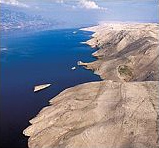 Pag is an island full of mythical olive groves, rich in sea salt, famous for its lace, cheese a world known delicacy, sheep's milk, live oil and what more do you need? Perhaps this: a part of Pag with its specific relief resembles the surface of the moon.
Pag is an island full of mythical olive groves, rich in sea salt, famous for its lace, cheese a world known delicacy, sheep's milk, live oil and what more do you need? Perhaps this: a part of Pag with its specific relief resembles the surface of the moon.
Moving along to the middle-Adriatic islands like: Olib, Silba, Premuda, Vir, Dugi Otok, Lovrada and Pasman, you notice immediately that you have left the every day problems and bounds of society far behind you. In front of you lies untouched nature. These islands will bewitch you, energize you and enrich you. They will become your dream, the kind you dream of with eyes wide open.
Silba is an island of ship owners and captains and old captain's houses as well as a harbor protected from the gushes of wind. Ist is an island of fishermen and navigators and is well known to navigators as a safe haven from the storm.
The island Ugljan is the 'suburban area' and a garden that lies in front of Zadar and it got its name because of its richness in oil. There are in fact more than 100.000 olive trees on this island.
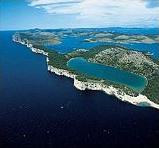 The nearby Pasman island 'grew into' Ugljan. They are actually twins, only Pasman is a bit more peaceful. They are equally beautiful and covered with silvery green olive groves. These two pearls can be seen from the coastal town of Biograd , the geographical center of the Adriatic. Iz is the island situated between Ugljan and Dugi Otok. It is just as famous for what it does and doesn't have. It has rich Mediterranean vegetation. It doesn't have any cars.
The nearby Pasman island 'grew into' Ugljan. They are actually twins, only Pasman is a bit more peaceful. They are equally beautiful and covered with silvery green olive groves. These two pearls can be seen from the coastal town of Biograd , the geographical center of the Adriatic. Iz is the island situated between Ugljan and Dugi Otok. It is just as famous for what it does and doesn't have. It has rich Mediterranean vegetation. It doesn't have any cars.
Dugi Otok offers rest in preserved nature of an area of 114 square kilometers. There are fishermen there, farmers, beautiful secluded beaches and tourist objects. The town of Telascica is situated there, which is the biggest natural harbor of all the Adriatic islands, a nature park and a habitat for mouflon.
According to the legend, Kornati labyrinth of sea passages and islands were created from the many rock cliffs that God had left over after he had finished making the World. He threw them into the sea, turned around and concluded that no other repairs were necessary.
The infamous George Bernard Shaw said of this group of the most indented islands of the Adriatic and the Mediterranean that consist of 140 islands, islets and reefs: 'The Gods wanted to crown their work, so on the last day, from their tears, the stars and their breath they created Kornati.
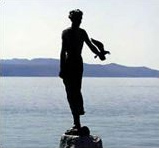 There are many fisherman's villages which are periodically inhabited on the islands and because they are rich in fish they are often the destination of sport fishermen.
There are many fisherman's villages which are periodically inhabited on the islands and because they are rich in fish they are often the destination of sport fishermen.
Kornati are especially interesting for navigators and thats why there are two nautical enters there: Zut and Piskera. Among the islands another picturesque one is Murter which has an area of 18 square kilometers. It is connected to the mainland by a bridge only 12 meters long. This is an island of fishermen, olive growers and ship builders with the towns: Tisno, Hramina, Betina and Jezera.
The island Prvici near the tourist pearl Vodice, it's an oasis of Mediterranean flora and fauna. The island Zlarin is southwest of Sibenik. In the 15 th century it was famous for coral and sponge harvesting and there is a museum that exhibits this.
West of Zlarin is the island of Obonjan, known as Otok Mladosti (The island of Youth). Not far is the island Kaprije, which got its name from the Mediterranean, plant caper (kapar) whose buds serve as spices. Many yachts visit Kaprije because of the many coves and beautiful beaches. Zirje is the farthest away inhabited island of the Sibenik archipelago with great fishing-grounds and many coves for navigators.Krapanj is the smallest and lowest inhabited island of the archipelago of an area of only 0,36 kilometers and only seven meters high but the most inhabited island.
"Across from" Split , a city harmonious in structure with cultural and historical values, with an airport and a harbor lies the island Brac, the highest and by size the third largest island in the Adriatic . It is covered with pine woods, vineyards and olive groves and the world famous stone from Brachas been used in the construction of many important buildings (e.g. The White House in Washington DC).The beautiful beach Zlatni rat is located in Bol, which is the biggest tourist town on the southern part of the island. The beach is located on a cape covered in pebbles which moves, depending on the wind and waves from one side to another. You'll have to admit that this is the only beach that you've heard of that changes its shape from day to day. There are many bathing-places and resorts on Brac: Postire, Milna, Supetar...
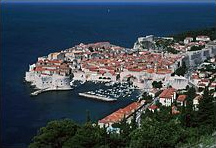 South of Brac is Hvar, the longest island of the Adriatic. This is an island of vineyards, olive groves and lavender. The island is surrounded by crystal cobalt sea, many springs of water and the largest number of sunny hours. The many stone houses along both coasts, which are connected by small bridges, achieve the harmonious unity of Stari Grad on Hvar, the fishermanvs museum is in Vrbovska which is unique on the Adriatic... Hvar is, no doubt , an exceptional island, a pleasant winter and summer resort, with a mild climate and exuberant subtropical vegetation. Pakleni otoci are an especially interesting group of islands with pebbly, sandyand mostly nudist beaches and a rocky sea bottom, perfect for spearfishing. It is also a well-known place for navigators.
South of Brac is Hvar, the longest island of the Adriatic. This is an island of vineyards, olive groves and lavender. The island is surrounded by crystal cobalt sea, many springs of water and the largest number of sunny hours. The many stone houses along both coasts, which are connected by small bridges, achieve the harmonious unity of Stari Grad on Hvar, the fishermanvs museum is in Vrbovska which is unique on the Adriatic... Hvar is, no doubt , an exceptional island, a pleasant winter and summer resort, with a mild climate and exuberant subtropical vegetation. Pakleni otoci are an especially interesting group of islands with pebbly, sandyand mostly nudist beaches and a rocky sea bottom, perfect for spearfishing. It is also a well-known place for navigators.
Opposite Split is the island Solta with poor vegetation, a steep and well - indented coast with Maslenica - the main harbor and anchorage for small boats.
Far from the mainland and its worries is the island Vis, rich in palm trees, known for its fishermen, sailors, beautiful nature and diverse tourist offer.
Southwest is the island Bisevo, of an area of 6 square kilometers. There are many caves in 'chiseled' into the steep coasts,among which 'Modra spilja' stands out with an above-sea level and below-sea level entrance. When the sea is calm the light rays that shine in the cave break in such a way against the cave walls that the objects and people inside it are covered in blue and those in the water a silvery color.
The Vis archipelago includes the islands Svetac (Sveti Andrija), Jabuka, Brusnik and the islands of Palagruza. Although it's formally known as a peninsula, Peljesac is indeed like an island, separated from Korcula by a narrow channel.
Ston and Mali Ston are picturesque towns that were after Dubrovnik in the Dubrovnik republic the most important towns. Oysters and wines: Postup and Dingac from the Mali Ston bay are famous all over these parts.
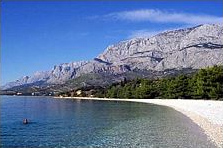 They say that Korcula is an island with the most legends and monuments and along with Lokrum and Mljet the Croatian island most covered with forests. Towards the end of the 13 th century near Korcula there was a naval battle between Venice and Genoa. Marco Polo, the famous traveler and travel book writer who was believed to have been born on Korcula was on the side of the Venetians. This is an island with many known towns: Korcula, Lumbarda and Vela Luka, the knight dance 'moreska' from the end of the 15 th century,famous stone-cutters, sailors and ship builders.
They say that Korcula is an island with the most legends and monuments and along with Lokrum and Mljet the Croatian island most covered with forests. Towards the end of the 13 th century near Korcula there was a naval battle between Venice and Genoa. Marco Polo, the famous traveler and travel book writer who was believed to have been born on Korcula was on the side of the Venetians. This is an island with many known towns: Korcula, Lumbarda and Vela Luka, the knight dance 'moreska' from the end of the 15 th century,famous stone-cutters, sailors and ship builders.
Far away out in the open sea is the island Lastovo of an area of 50 square kilometers, with an indented pebble coast with sandy beaches and a few islands on the west and east coast. The houses on Lastovo are built one above the other one: each one is entitled to its own share in the sun, air and the view.
Alongside Peljesac is the woodsy island of Mljet of an area of 100 square kilometers. Because of its thick alpine and stone pine, Karst caves, two picturesque lakes connected by the sea, many sandy and pebble beaches, many fishing-grounds rich in fish and lobsters, the western part of the island has been proclaimed a national park.
Not many people can determine the color of the Adriatic sea. Sometimes it's dark blue, sometimes greenish-blue. The fact is that the sea, depending on the time of day and the angle of the sun's rays overflows into a thousands nuances. However, it is always beautiful and unique. Out of the 1185 islands and cliffs, one is definitely your cup of tea. Come and choose it.

